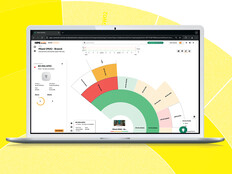“That burden of ownership for being able to deploy it, manage it, upgrade it, what to do when that equipment is at the end of its life — that is now all shifted to the networking provider who's offering the networking equipment as a service,” Butler says.
How NaaS Differs from IaaS and PaaS
With Infrastructure as a Service (IaaS), a vendor manages storage, hosting, compute and networking resources for a company on a per-use basis. The terms could be per hour, week or month.
“NaaS can be thought of as a subset of IaaS,” says Kelly Baig, director of As a Service Marketing for Aruba, a Hewlett Packard Enterprise company. “IaaS is often referred to as the flexible consumption of all infrastructure hardware, software and services, which includes compute power and servers, storage and networking.”
A NaaS platform works similarly to IaaS and another subscription option, Platform as a Service (PaaS), but instead of other infrastructure, it offers networking equipment as a service.
“PaaS is more about application development environments,” Butler says. “IaaS would be any type of infrastructure that is offered as a service. So that could be computer storage, networking, or both of those combined.”
NaaS differs from IaaS in that networking providers deliver NaaS, and cloud providers offer IaaS, Butler noted. NaaS can be included in an IaaS subscription or offered separately on-premises to companies as a service.
“NaaS is going to be a model for enterprises to consume their networking resources that they need as a service versus Infrastructure as a Service, which is a way of consuming, more broadly, infrastructure components as a service, typically in a public cloud,” he explains. “But it could also be in a private cloud.”
How a Small Businesses Can Use NaaS
A NaaS model benefits small businesses because they can offload day-to-day maintenance of equipment and focus on tasks that they do best, such as customer service.
MORE FROM BIZTECH: The small businesses tech trends to watch in 2021.
“When you are able to outsource the management of the network, it allows the small business to focus on what’s really important to them,” Butler says.
Flexibility to scale up or down has been helpful during the 2020 COVID-19 pandemic as companies’ business needs have changed. If a small retailer needs to scale down networking capacity in a retail location and increase online operations instead, a NaaS model allows them to do that, Butler noted.
The COVID-19 pandemic has caused small businesses to consider NaaS because of an increase in demand. In a recent Parks Associates survey, 19 percent of SMBs reported that their network equipment or management solutions had increased due to COVID-19.
In addition, NaaS lets small businesses try out new technology, such as artificial intelligence (AI), faster under the subscription model than they would have if they bought the networking equipment outright and kept the same equipment for years.
“NaaS allows SMBs to keep up with the pace of technology innovations, providing faster network refreshes and faster deployment of new features and functionality,” Aruba’s Baig says.
Small businesses can sign up for AI and machine learning features as part of a NaaS subscription.
AI “allows for more dynamic use of new technology that enterprises may be interested in trying out,” Butler adds.
The flexibility that NaaS offers will lead many businesses to consider this subscription model going forward, according to Butler.
“We expect Networking as a Service to be an important way that enterprises of all sizes, from small businesses up to large enterprises, consume networking resources in the future,” Butler says.











